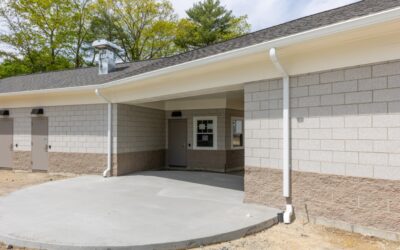Are you wondering what is affordable housing? The term “affordable housing” often appears in discussions about urban development, community building, and economic growth. But what does it really mean, and why are affordable housing options so vital for cities and communities?
For real estate developers and investors, affordable housing is more than a community necessity; it’s an opportunity to contribute to social equity, access lucrative incentives, and engage in sustainable urban development.
This blog unpacks the fundamentals of affordable housing, its measurement, types, and approaches, as well as the benefits it offers to both communities and stakeholders.

What is Affordable Housing?
Affordable housing, at its core, refers to housing that costs no more than 30% of a household’s gross income, ensuring that housing cost does not become a financial burden to low income residents or moderate income households.
When housing costs exceed this benchmark, households are considered “cost burdened,” often leading to financial strain and reduced spending on necessities like healthcare and education.
How is Affordable Housing Measured?
Determining housing affordability isn’t as straightforward as it may seem. Different methods and tools are used across the globe to evaluate affordability.
Key methods include:
- Housing Affordability Index: Measures the cost of owning a home relative to median incomes.
- Median House Price to Income Ratio: An internationally recognized metric that divides the median house price by the annual median household income.
- Housing Costs as a Percentage of Income: This approach calculates the percentage of household income spent on rent or mortgage payments, including utilities.
It’s important to note that definitions of affordable housing can vary by location and policy. For instance, in the U.S., the Department of Housing and Urban Development (HUD) often tailors affordability metrics to local conditions through parameters like “Area Median Income” (AMI).
The federal government, through agencies like HUD, plays a crucial role in defining and regulating these affordability metrics.
Types of Affordable Housing: Naturally Occurring Affordable Housing
Affordable housing serves households across a range of income levels, from low-income families to moderate-income workers who may still be cost-burdened.
Below are some key types of affordable housing:
- Public Housing: Government-owned housing designed to serve low-income households.
- Affordable Rental Housing: Rental units offered at reduced rates, typically through subsidies or naturally occurring affordability.
- Naturally Occurring Affordable Housing (NOAH): Residential properties that are affordable without federal subsidies, crucial for middle-income households.
- Housing Choice Vouchers (Section 8): Federal subsidies that cap tenants’ rent payments at 30% of their income.
- Affordable Homeownership Programs: Designed to empower low- to moderate-income families to transition from renting to owning. These programs often include down payment assistance and subsidized mortgages.

The Affordable Housing Challenges of Building Affordable Housing
Despite its significance, developing affordable housing comes with a unique set of challenges:
- High Construction Costs: Rising costs of materials and labor, combined with limited land availability, make construction expensive.
- Zoning and Community Resistance: Zoning laws and “Not in My Backyard” (NIMBY) attitudes can delay or block projects.
- Limited Funding: Developers often rely on subsidies, tax credits, and public-private partnerships, which are finite.
- Ensuring Long-Term Affordability: Maintaining affordability over decades requires thoughtful design and governance.
- Navigating Regulations: Complex regulatory frameworks can be cumbersome for developers to manage.
- Balancing Financial Viability with Affordability: Striking a balance between project profitability and community affordability needs is a constant challenge.
- Affordable Housing Programs: Initiatives aimed at assisting households that earn below the area median income (AMI), essential for developing affordable rental units and supporting low-income homebuyers.

Innovative Solutions to Affordable Housing Challenges
Developers, investors, and policymakers are leveraging innovative strategies to overcome these hurdles.
Three key approaches include:
1. Market-Based Approaches
Market-based solutions focus on increasing the supply of affordable housing through economic incentives. For example, inclusionary zoning policies require developers to allocate a portion of new construction as affordable units.
Market-rate developments can also integrate affordable housing to ensure diversity and equitable access.
2. Subsidy-Based Approaches
Subsidized housing, supported by federal, state, and local governments, helps alleviate costs for developers and tenants.
Programs like Low-Income Housing Tax Credits (LIHTC) encourage private investments in affordable developments by offering tax benefits. Housing bonds and rental subsidies like Section 8 also play a crucial role in making housing financially accessible.
3. Design-Based Approaches
Design innovations, such as modular construction or retrofitting existing buildings, can reduce costs while expanding available units. Repurposing underutilized commercial properties, like old warehouses or factories, has proven effective in dense urban areas.

Affordable Housing’s Impact on Community Development
Affordable housing is not just a roof over someone’s head; it’s the foundation of thriving communities.
Here are some of the key ways it contributes to community development:
Economic Stability
Affordable housing allows families to spend less on rent or mortgage payments and more on necessities like healthcare, education, and savings. Over time, this financial stability improves quality of life and promotes economic mobility.
Revitalized Neighborhoods
Affordable housing projects often rejuvenate underdeveloped or neglected areas. This revitalization attracts businesses, creates jobs, and strengthens local economies.
Reduced Homelessness
Addressing housing affordability directly reduces homelessness. Stable housing provides individuals and families with the security they need to rebuild their lives and participate fully in society.
Diverse and Inclusive Communities
Affordable housing ensures that people of all income levels, from essential workers to young professionals, can live and work in the same communities. This diversity fosters social cohesion and mutual understanding.
Enhanced Health and Education
Studies show that secure, affordable housing correlates with better health outcomes, academic performance, and overall well-being. For children, stable homes reduce school disruptions and support higher graduation rates.
Environmental Benefits
Sustainable affordable housing reduces energy consumption and integrates green building principles. For example, solar panels and efficient insulation lower both utility costs and carbon footprints.

Real Opportunities for Real Estate Developers and Investors
Affordable housing presents significant opportunities for developers and investors, particularly in urban areas experiencing rapid growth.
Benefits include:
- Access to Incentives: Programs like LIHTC and government grants make affordable housing developments financially viable.
- Demand Resiliency: Affordable housing demand tends to remain consistent, even during economic downturns.
- Positive Branding: Affordable housing investments enhance a developer’s reputation by showcasing a commitment to social responsibility.
- Long-Term Stability: Affordable housing provides consistent returns over time due to steady occupancy rates and government backing.

Affordable Housing Financing
Affordable housing financing is a cornerstone of developing and preserving affordable housing units. Various financing options are available to support affordable housing development, ensuring that projects are financially viable and sustainable.
Key financing mechanisms include Low-Income Housing Tax Credits (LIHTC), Housing Bonds, and the National Housing Trust Fund (HTF).
Low-Income Housing Tax Credits (LIHTC)
The Low-Income Housing Tax Credit (LIHTC) program is a pivotal federal initiative that incentivizes the development and rehabilitation of affordable rental housing. Through this program, developers can claim tax credits against their federal income tax liability in exchange for investing in affordable housing projects.
State housing finance agencies allocate these tax credits to developers, who can then sell the credits to investors to raise capital. This infusion of capital makes it feasible to create and maintain affordable rental housing, addressing the needs of low-income families and individuals.
Housing Bonds
Housing bonds are another vital tool in the affordable housing financing toolkit. Issued by local governments, these municipal bonds are backed by the full faith and credit of the issuing entity. The proceeds from the bond sales are directed towards the development or rehabilitation of affordable housing units.
Investors who purchase these bonds receive interest payments, making it an attractive investment while simultaneously supporting community housing needs. Housing bonds enable local governments to fund large-scale affordable housing projects, ensuring a steady supply of affordable units.
The National Housing Trust Fund (HTF)
The National Housing Trust Fund (HTF) is a federal program dedicated to the development and preservation of affordable housing units. Funded through a small percentage of the annual profits of Fannie Mae and Freddie Mac, the HTF allocates resources to states to support affordable housing projects.
The program prioritizes projects that serve extremely low-income households, particularly those with incomes at or below 30% of the area median income. By focusing on the most vulnerable populations, the HTF plays a crucial role in addressing severe housing affordability challenges.

Affordable Rental Development
Affordable rental development is a critical component in tackling the affordable housing crisis. By providing safe and stable rental units, developers and investors can significantly impact the lives of low-income households, reducing the risk of homelessness and fostering community stability.
Affordable rental units offer a lifeline to families and individuals who might otherwise struggle to find housing within their means. These units ensure that low-income households have access to quality living conditions without the burden of excessive housing costs.
For developers and investors, creating affordable rental housing not only addresses a pressing social need but also offers a resilient investment opportunity. The demand for affordable rental units remains strong, providing consistent occupancy rates and stable returns.
In conclusion, affordable rental development is essential for creating inclusive communities where people of all income levels can thrive. By investing in affordable rental housing, developers and investors contribute to a more equitable and sustainable urban landscape, ensuring that everyone has a place to call home.

The Road Ahead for Affordable Housing
To further affordable housing development, stakeholders must continue to adopt innovative strategies, foster public-private partnerships, and advocate for balanced policy reform.
Solving affordable housing challenges requires a unified effort from federal, state, and local governments, private developers, and communities. The federal government must continue to provide financial support and policy guidance to ensure the success of affordable housing initiatives.
If you’re a real estate developer or investor looking to explore affordable housing opportunities, now is the time to act. Affordable housing is more than an economic necessity; it’s an investment in the future of our cities and the people who inhabit them.
Learn More About Affordable Housing
To better understand the complexities and opportunities surrounding affordable housing, explore the following resources:
- U.S. Department of Housing and Urban Development (HUD): Learn about federal programs, policies, and resources dedicated to affordable housing.
- National Low Income Housing Coalition (NLIHC): Access data, research, and advocacy resources focused on addressing housing affordability and accessibility issues.
- Urban Land Institute (ULI) – Affordable Housing: Discover innovative strategies and case studies to promote accessible, affordable housing development.
- Joint Center for Housing Studies of Harvard University: Explore insightful reports and research on housing trends, affordability, and challenges in the U.S.
- Enterprise Community Partners: Find tools and resources designed to support affordable housing projects and community initiatives.
- National Low Income Housing Coalition: Access data, advocacy tools, and research focused on expanding affordable housing for low-income communities.
- Urban Land Institute: Discover resources and programs dedicated to sustainable land use and urban housing solutions.
- Habitat for Humanity: Learn about global efforts to create affordable housing through community-driven initiatives and volunteer work.
These organizations and platforms offer valuable insights to deepen your knowledge and inspire action in addressing the affordable housing crisis.
View Our Work
The Overlook – Masonic Health System
"We’re honored to have partnered with The Overlook on this transformative initiative. Our team brought specialized expertise in working within occupied senior living communities, delivering a seamless renovation that aligns with The Overlook’s exceptional standards of...
Hamilton Wenham
Their team was collaborative, responsive, and committed to our shared vision for this space, -Eric Tracy Superintendent, Hamilton-Wenham Regional School District We partnered with the Hamilton-Wenham Regional School District to deliver a brand-new athletic building...






